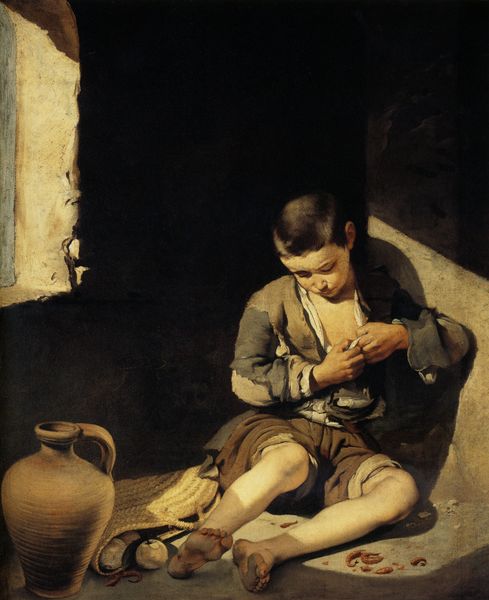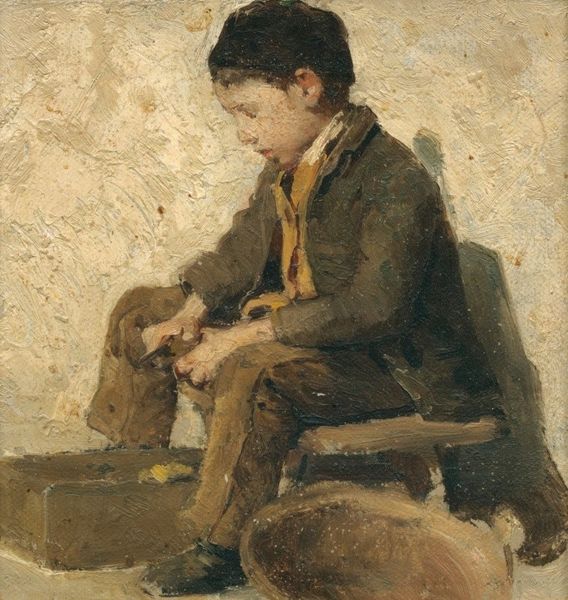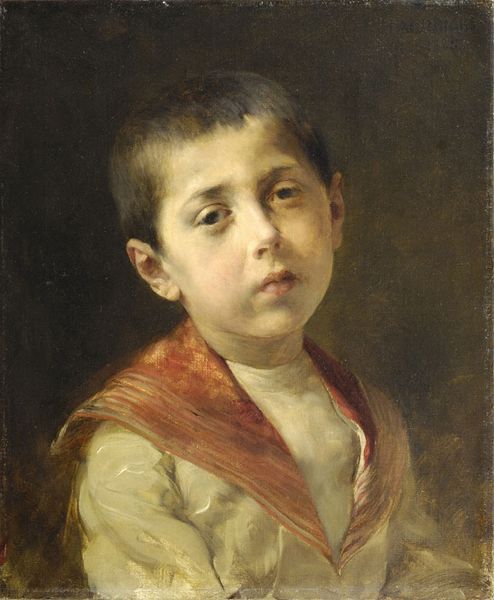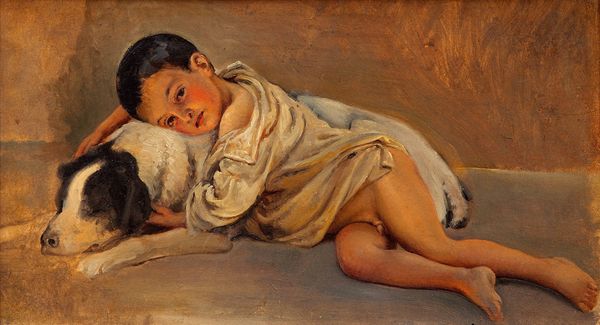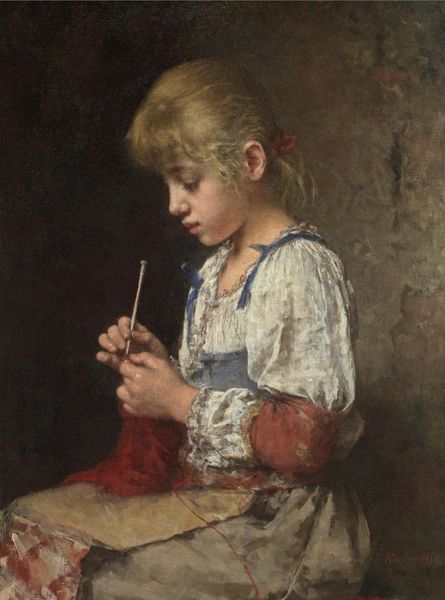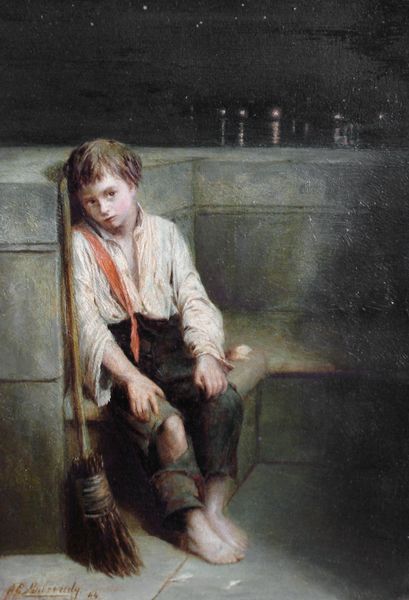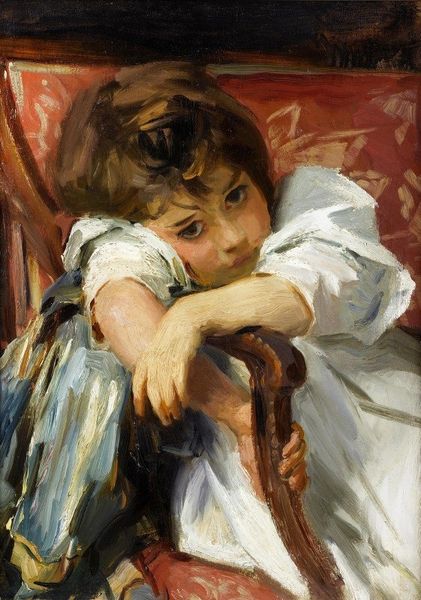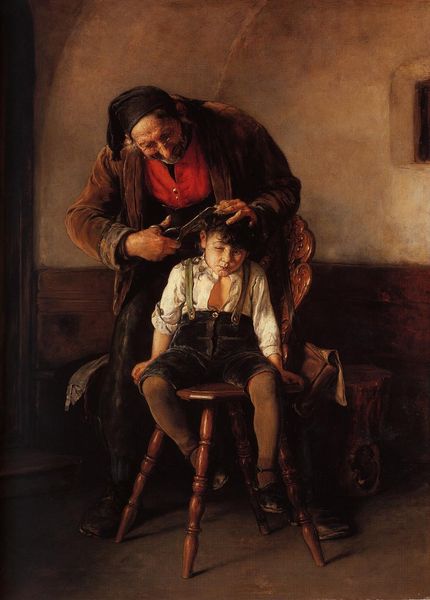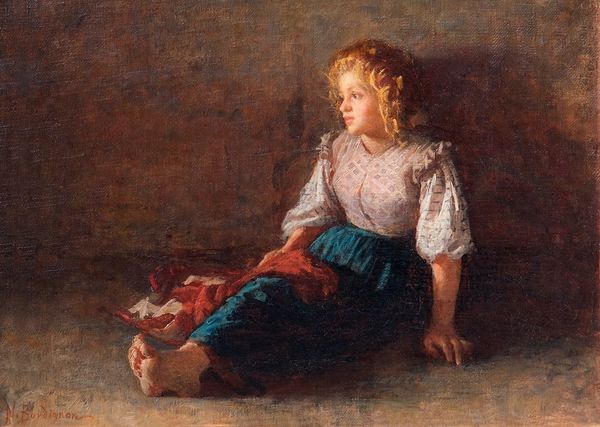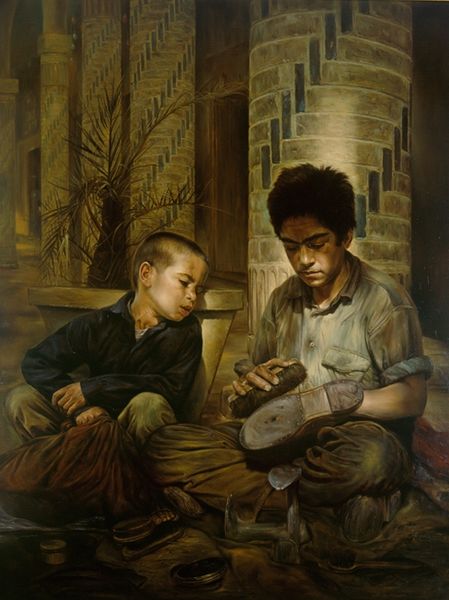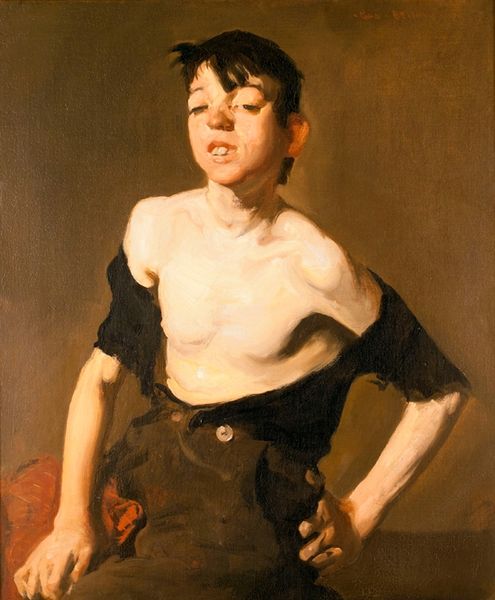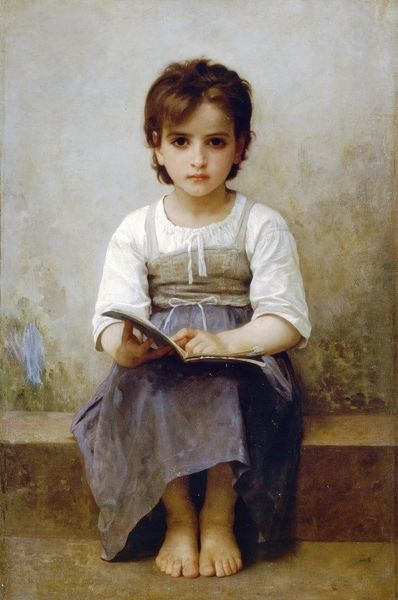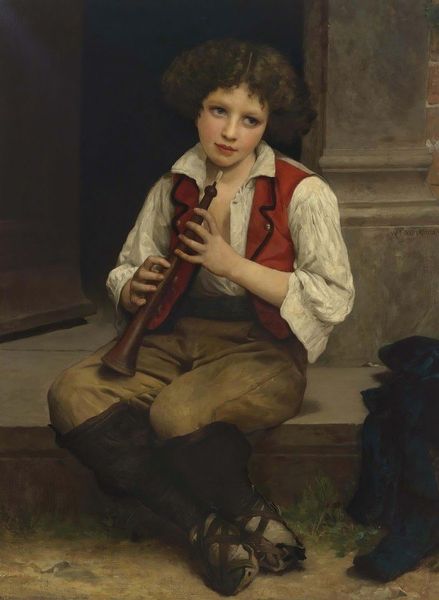
painting, oil-paint
#
portrait
#
narrative-art
#
painting
#
oil-paint
#
charcoal drawing
#
figuration
#
child
#
genre-painting
#
realism
Dimensions: 112 x 84 cm
Copyright: Morteza Katouzian,Fair Use
Curator: Here we have Morteza Katouzian’s 1985 oil painting, “In the Memory of Parvin Etesami." Editor: My first thought is of intense desolation. The muted palette amplifies the boy’s forlorn posture amid the wreckage. It is a visceral scene. Curator: It really is. Considering the historical backdrop of 1980s Iran, this work can be interpreted through the lens of displacement and loss experienced by many during and after the revolution and subsequent war with Iraq. Editor: That social context informs a potent reading, yes, but let’s also look at the very grounded materiality: oil on canvas. It emphasizes the tangible consequences of such sociopolitical upheaval. I am wondering, too, about the creation of that broken pottery. The skill of creating then intentionally destroying speaks volumes. Curator: Absolutely. This child could represent a generation robbed of its innocence. The painting itself then becomes a memorial—not just to the poet Parvin Etesami, but to collective sorrow, with gendered and class dimensions in mind. Did the revolution disproportionately impact poor families in the lower classes who sent children into the Basij fighting? It brings so many points to question. Editor: Indeed, and seeing the fragments, it’s clear Katouzian had an active engagement with the object prior to its depiction, mirroring the way socio-political realities break down societal structures, reflected here, and affect people. Curator: So, considering your observations about its construction, could we argue the shattering becomes symbolic of a society fractured? Editor: I think that's the potent suggestion here: the making and unmaking become metaphors for larger processes of building and destruction and it calls attention to labour and craft disrupted, not merely to sentiment or individual emotional states, although that, of course, is communicated strongly. Curator: Viewing "In the Memory of Parvin Etesami" offers a powerful look at a complex, specific sociohistorical context through visual symbolism and emotionally evocative imagery. Editor: Agreed. The stark materiality invites contemplation about the forces shaping lives during times of massive social change.
Comments
No comments
Be the first to comment and join the conversation on the ultimate creative platform.
